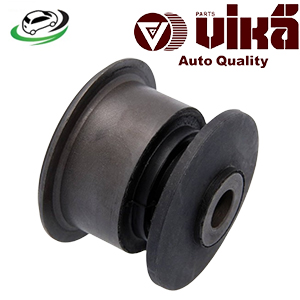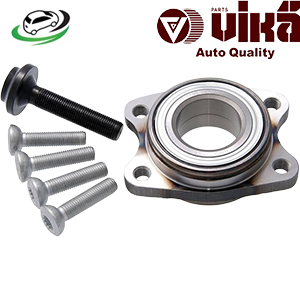-12%
Get Engine Motor Mount AUDI A4 1.8 1.8T / VW Passat 3B 1.9D 8D0199379J
Engine motor mounts are fundamental components of a vehicle’s engine and drivetrain system. They play a crucial role in ensuring the engine’s stability, reducing vibrations, and facilitating smooth operation. Despite their critical function, engine mounts are often overlooked until they fail. This guide provides an in-depth look at engine motor mounts, covering their functions, construction, types, signs of wear, replacement procedures, and overall importance in vehicle performance.
What is an Engine Motor Mount?
An engine motor mount is a bracket or support that secures the engine to the vehicle’s chassis or frame. The primary function of the motor mount is to keep the engine in place while allowing for controlled movement. This movement is necessary to accommodate the engine’s vibrations and thermal expansion without compromising vehicle stability and comfort.
Functions of Engine Motor Mounts
Engine motor mounts serve several important functions in a vehicle:
- Engine Stabilization: The primary role of motor mounts is to secure the engine to the vehicle’s chassis. This stabilization prevents excessive movement of the engine during operation, which could otherwise lead to misalignment of the drivetrain and damage to other components.
- Vibration Dampening: Engine mounts are designed to absorb and reduce engine vibrations. Without effective vibration dampening, these vibrations could be transmitted through the vehicle, causing discomfort for passengers and leading to premature wear of other components.
- Noise Reduction: By isolating the engine from the rest of the vehicle, motor mounts help to minimize engine noise. This contributes to a quieter cabin environment and a more pleasant driving experience.
- Shock Absorption: Motor mounts absorb shocks and impacts from road conditions and engine movement. This helps to protect the engine and transmission from excessive stress and potential damage.
- Engine Movement Control: Motor mounts allow for controlled movement of the engine, which is essential for accommodating the engine’s thermal expansion and contraction as it heats up and cools down during operation.
Construction of Engine Motor Mounts
Engine motor mounts are typically composed of several key components:
- Mounting Brackets: These metal brackets attach the motor mount to the engine and the vehicle’s frame. They provide structural support and ensure that the mount remains securely in place.
- Rubber or Polyurethane Insulator: The insulator is a key component of the motor mount that absorbs vibrations and shocks. It is usually made of rubber or polyurethane and is designed to provide a flexible cushion between the engine and the chassis.
- Metal Sleeves: Some motor mounts include metal sleeves or inserts that help to reinforce the rubber or polyurethane insulator. These sleeves provide additional support and help to prevent excessive movement of the engine.
- Mounting Bolts and Nuts: Motor mounts are secured to the engine and chassis using bolts and nuts. These fasteners must be tightened to the manufacturer’s specifications to ensure proper installation and function.
Types of Engine Motor Mounts
There are several types of engine motor mounts, each designed for specific applications and performance requirements:
- Hydraulic Motor Mounts: These mounts use a hydraulic fluid to provide vibration dampening and shock absorption. The fluid-filled mounts offer superior vibration isolation and are commonly used in modern vehicles for their smooth operation and noise reduction.
- Rubber Motor Mounts: Traditional motor mounts use rubber insulators to absorb vibrations and shocks. Rubber mounts are effective for reducing noise and providing a comfortable ride, but they may wear out more quickly under extreme conditions.
- Polyurethane Motor Mounts: Polyurethane mounts offer increased durability and resistance to wear compared to rubber mounts. They provide better support and control engine movement, making them suitable for performance vehicles and heavy-duty applications.
- Solid Motor Mounts: Solid motor mounts are made entirely of metal and offer maximum rigidity. They are commonly used in racing or high-performance applications where precise control of engine movement is essential. However, solid mounts can transmit more engine vibrations to the vehicle’s cabin.
- Active Motor Mounts: Some modern vehicles are equipped with active motor mounts that use electronic sensors and actuators to adjust the level of vibration damping in real-time. These mounts provide optimal performance and comfort by adapting to different driving conditions.
Signs of Worn or Failing Engine Motor Mounts
Over time, engine motor mounts can wear out or become damaged, leading to various symptoms that affect the vehicle’s performance and comfort. Common signs of worn or failing motor mounts include:
- Excessive Engine Movement: If you notice that the engine shifts or moves excessively during acceleration, braking, or idling, it may be a sign of worn motor mounts. This movement can lead to misalignment of the drivetrain and increased stress on other components.
- Increased Vibration: Worn motor mounts can fail to absorb engine vibrations effectively, leading to increased vibration felt through the steering wheel, floor, or seat. This can result in a rough and uncomfortable driving experience.
- Clunking or Thumping Noises: A common symptom of failing motor mounts is a clunking or thumping noise when the vehicle accelerates or shifts gears. These noises are often caused by the engine making contact with the chassis or frame due to deteriorated mounts.
- Engine Noise: Excessive engine noise, particularly when the vehicle is idling or under load, can indicate that the motor mounts are not providing adequate noise isolation. This noise can be a result of the engine moving more than it should.
- Misalignment: Worn motor mounts can cause the engine to become misaligned, leading to issues with the drivetrain, such as difficulty shifting gears or unusual vibrations during driving.
- Visible Damage: In some cases, worn or damaged motor mounts may be visibly damaged. This can include cracked or torn rubber insulators, loose mounting bolts, or distorted metal brackets.
Consequences of Ignoring Worn Engine Motor Mounts
Neglecting to address worn or failing engine motor mounts can lead to several serious consequences:
- Increased Wear on Drivetrain Components: Excessive engine movement and vibrations can place additional stress on the drivetrain components, such as the transmission and driveshaft. This can lead to premature wear and costly repairs.
- Reduced Vehicle Comfort: A vehicle with worn motor mounts will experience increased vibrations and noise, leading to a less comfortable driving experience. This can make long drives particularly unpleasant for passengers.
- Damage to the Engine and Frame: If the engine is allowed to move excessively, it can cause damage to the engine mounts, engine components, and the vehicle’s frame. This can result in costly repairs and potential safety issues.
- Poor Handling and Performance: Worn motor mounts can negatively impact the vehicle’s handling and performance. The engine may not operate as smoothly or efficiently, affecting acceleration, braking, and overall driving dynamics.
Replacing Engine Motor Mounts
Replacing engine motor mounts is a task that requires mechanical expertise and the right tools. The process can vary depending on the vehicle’s make and model, but generally involves the following steps:
- Raise the Vehicle: Use a jack to lift the vehicle and secure it with jack stands. This provides access to the engine and motor mounts.
- Support the Engine: Use an engine support or crane to hold the engine in place while you remove the motor mounts. This prevents the engine from shifting or falling during the replacement process.
- Remove the Old Motor Mounts: Disconnect the motor mounts from the engine and the chassis. This usually requires removing bolts and nuts that secure the mounts in place. Be cautious when removing the old mounts to avoid damaging other components.
- Install the New Motor Mounts: Position the new motor mounts and secure them to the engine and chassis using the appropriate bolts and nuts. Ensure that all fasteners are tightened to the manufacturer’s specifications.
- Lower the Engine: Carefully lower the engine and remove the support or crane. Ensure that the engine is properly aligned and that the new motor mounts are functioning correctly.
- Test Drive: After replacing the motor mounts, take the vehicle for a test drive to ensure that everything is functioning correctly. Pay attention to the ride quality, engine movement, and handling.
Choosing the Right Engine Motor Mounts
When replacing engine motor mounts, it’s important to choose the right type and quality for your vehicle:
- OEM Mounts: Original Equipment Manufacturer (OEM) motor mounts are designed specifically for your vehicle and offer the same performance and durability as the original parts.
- Aftermarket Mounts: Aftermarket motor mounts can vary in quality, so it’s important to choose a reputable brand. Some aftermarket mounts may offer improved performance or durability, particularly those made from polyurethane or with enhanced design features.
- Performance Mounts: For performance vehicles or those with modified engines, performance motor mounts made from polyurethane or solid metal may be a good choice. These mounts offer increased rigidity and better control but may result in a harsher ride.
Follow us on Facebook for more parts.



